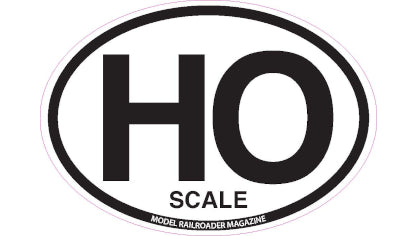HO scale model trains are a significant part of model railroading history, and we can partially credit the overall popularity of model trains with the rise of a convenient, tabletop scale like HO. With origins dating back a century, HO scale trains have grown into the most popular model train scale in the world.
Model trains first appeared in the late 19th century as simple tinplate toys, often crafted by hand.
Before HO scale became the standard for model railroading, O scale was the dominant size, with a ratio of 1:48. However, in the early 20th century, a growing demand for more compact model trains led to the development of smaller scales that would better suit the average home.
In approximately 1922, German toy manufacturer Bing began marketing its novel “tabletop railway.” The set originally came on a quasi-ballasted track with a gauge of 16.5 mm and was described as H0, or “Half O.” The earliest known HO scale trains were clockwork-driven, but by 1924 they were mostly electric.
The popularity and ubiquity of HO scale was cemented when accessory manufacturers, most notably Kibri, began to make buildings and other accessories in the corresponding 1:87 scale.
At half the size of O scale trains, HO models offered a perfect balance between detail and space efficiency. HO scale’s smaller size made it ideal for hobbyists who didn’t have room for large layouts, allowing them to build more intricate, detailed scenes on smaller tables. This scale quickly gained traction and became a favorite among serious modelers.
World War II temporarily slowed model train production, as many manufacturers pivoted to producing wartime materials. After the war, however, the popularity of HO scale grew massively. Veterans returning from Europe brought home stories of the detailed HO scale models they had seen abroad, and American manufacturers like Lionel and Athearn began investing heavily in HO production, recognizing its potential to dominate the hobby market.
In the 1950s and 1960s, HO scale became the go-to choice for modelers as innovations in plastics made trains more affordable and accessible. The rise of model railroading clubs and publications dedicated to HO layouts further cemented its popularity.
By the 1970s, manufacturers like Rivarossi, Fleischmann, and Märklin were producing incredibly detailed locomotives and rolling stock. Thanks to publications like Model Trains, a vibrant community began to form around the subculture of model trains, and enthusiasts began taking accuracy and detail to higher and higher levels.
Lifelike landscapes, complete with buildings, bridges, and weathered tracks were featured in national publications and exhibition events.
Advancements in technology have allowed HO-scale trains to become even more realistic. Digital Command Control (DCC) systems emerged in the 1990s, which gave us the ability to control multiple trains on a single track and add sound effects, lighting, and other dynamic features.
Today, HO scale continues to dominate the model railroading world, accounting for roughly two-thirds of the market. Manufacturers continue to push the boundaries of detail and technology, creating models that rival their real-life counterparts in detail and even mechanical reliability.
Because HO scale is still popular today, you can build the setups that are, in many cases, compatible with models a hundred years old. The longstanding dominance of HO scale has its commercial reasons, but there’s also something to be said for generations of enthusiasts who pass down their models and tracks to new generations – who, in turn, can continue to build off of that legacy.
If you want to start your HO scale collection, check out today’s deals at shop.trains.com and pick up essential tools, guides, and accessories.
- Written by Matt Herr

